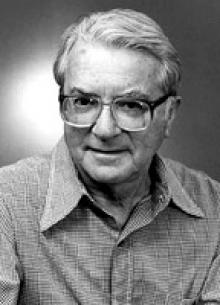Норман Гарольд Хоровиц
Биография
 Норман Гарольд Хоровиц (Norman Harold Horowitz), (19.03.1915 - 01.06.2005) - известный американский ученый, крупный экзобиолог, один из научных руководителей программы «Викинг». Dr. Norman H. Horowitz, a biologist and geneticist who did pioneering work in biochemical synthesis and designed experiments that looked for life on Mars, died Wednesday at his home in Pasadena, Calif. He was 90. The cause was congestive heart failure, said his daughter, Elizabeth Horowitz. Early in his career, Dr. Horowitz established a reputation for his research on the biochemical evolution of life. Because of that interest, he began a long collaboration in 1965 with the Jet Propulsion Laboratory in Pasadena, where he was involved in projects searching for life on other planets. He was a member of scientific teams for the Mariner and Viking spacecraft missions to Mars in the 1960's and 70's. The two Viking landers that set down on Mars in 1976 included an experiment designed by Dr. Horowitz. Called the pyrolytic release experiment, the project showed that Mars was a chemically reactive world. The research helped resolve ambiguous indications that the spacecraft had detected biological life. Experts generally agreed later that it had not. Dr. Horowitz, who spent much of his career at the California Institute of Technology, was a proponent of sending more advanced robotic experiments to other worlds to look for life, but he saw no scientific value in sending humans to Mars and other planets. Continue reading the main story Much earlier, Dr. Horowitz drew notice in biochemistry for a 1945 paper on biochemical evolution, published in The Proceedings of the National Academy of Sciences. Today, that research is considered pivotal in the study of evolution at the molecular level. Dr. Horowitz also performed a seminal experiment that led to the widespread acceptance of the one-gene, one-enzyme hypothesis of how genes regulate chemical events. He was a member of the National Academy of Sciences and the American Academy of Arts and Sciences. His honors included a 1998 medal from the Genetics Society of America. A native of Pittsburgh, Norman Harold Horowitz attended local public schools and graduated from the University of Pittsburgh in 1936 with a degree in biology. After completing a doctorate in biology at Caltech in 1939, he began a career studying the genetics of the red bread mold Neurospora crassa and worked in the laboratory of Dr. George W. Beadle at Stanford. When Dr. Beadle went to Caltech in 1946 to head its biology division, he took Dr. Horowitz with him. In 1958, when Dr. Beadle shared a Nobel Prize in Medicine, he gave credit to Dr. Horowitz for his original work on biological reactions. Dr. Horowitz became a professor emeritus at Caltech in 1982. In addition to his daughter, Elizabeth, of Berkeley, Calif., Dr. Horowitz is survived by a son, Joel, of Iowa City and Evanston, Ill.; and two grandchildren. His wife, Pearl Shykin Horowitz, died in 1985. Показывать: |
|
